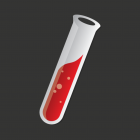Gradle Basics
Gradle is an open source build automation system. It has a Java plugin to allow building Java applications and running tests for them.
In this tutorial you will explore the different tasks available in Gradle.
Prerequisite:
Having a basic background in Java programming is required to do this tutorial.
Install Gradle
Go to Gradle's download page. Download the latest version. The
Binary only distributionis sufficient.Extract Gradle directory.
In the extracted Gradle directory, confirm that there is a
binsubdirectory. Take note of the path of thebinsubdirectory (e.g.,/temp/gradle-2.10/bin).Add the path of the
binsubdirectory to thePATHenvironment variable.In
Windows, you may use this link as a guide.In
Linux, kindly consult the Internet to permanently include the path of the Gradlebindirectory to thePATHenvironment variable.Open a terminal window and issue the
gradlecommand to confirm that gradle is set-up properly.> gradleOutput:
:help Welcome to Gradle 2.10. To run a build, run gradle <task> ... To see a list of available tasks, run gradle tasks To see a list of command-line options, run gradle --help To see more detail about a task, run gradle help --task <task> BUILD SUCCESSFUL Total time: 2.034 secs
Understanding Gradle
Gradle is a build automation system. A build has one or more projects (e.g., the thing we build like a .jar file). A project, on the other hand, has one or more tasks (e.g., compiling a project or running a test).
Open a terminal window and check the tasks available in Gradle.
> gradle tasksOutput:
: : assemble - Assembles the outputs of this project. build - Assembles and tests this project. buildDependents - Assembles and tests this project and all projects that depend on it. buildNeeded - Assembles and tests this project and all projects it depends on. classes - Assembles main classes. clean - Deletes the build directory. jar - Assembles a jar archive containing the main classes. testClasses - Assembles test classes. war - Generates a war archive with all the compiled classes, the web-app content and the libraries.Some of these tasks will be used in succeeding exercises involving Gradle.
End of Tutorial
Go back to the List of Tutorials.
